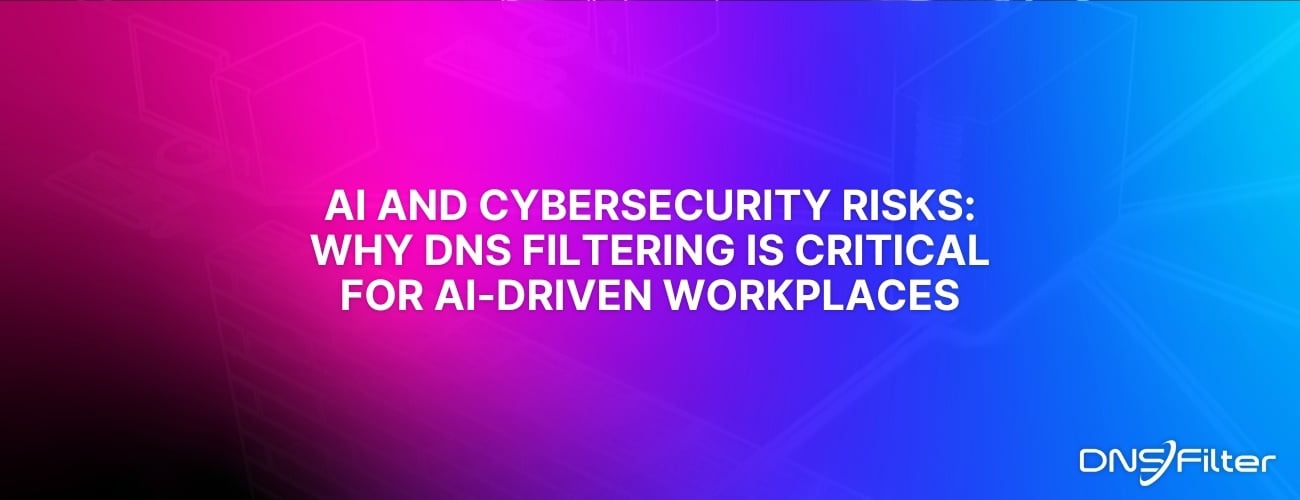Share this
Active Directory Sync Tool: New Capabilities, Including Security & Dynamic Group Syncing
by Aliese Alter on Oct 27, 2021 12:00:00 AM
On-premise Active Directory (AD) and Azure AD are frequently used by organizations to authenticate and sanction users by facilitating and assigning actions such as policies and user permissions, as well as to support the installation of software and ongoing maintenance, such as updates.
In an effort to increase the productivity and efficiency of our customers through integration with current tools, DNSFilter launched its first iteration of Active Directory integration in June 2020. To support the integration, DNSFilter developed the Sync Tool, available to customers who have Pro+ subscriptions. This permits customers who employ either on-premise Active Directory or Azure AD to synchronize DNSFilter user account creation and provisioning with their existing deployments. More specifically, administrators can group users into collections and apply specific policies, schedules, and block pages to those collections, as well as on a per-user basis.
At DNSFilter, we are dedicated to iterating and enhancing existing features through leveraging new technologies as well as feedback from customers actively using the features. As a result, DNSFilter is excited to announce a new release of the Sync Tool which includes both enhancements and improvements to strengthen the user experience.
New capabilities:
- Syncing of both security and dynamic groups
- Increased communication and functionality
- Automatic Full Sync
- Ability to support up to 500,000 users
Sync Security and Dynamic Groups
What does this mean? More synergy between DNSFilter and existing platforms through user creation and provisioning!
New features:
- Sync Dynamic Groups from both on-premise AD and Azure AD
- Sync Built-in groups from on-premise AD
Increased Communication & Functionality
What does this mean? Improved in-app communication on activities and status, and additional functions to enhance the user experience!
New features:
- Progress bar detailing how far along the sync is, and how many objects out of the total number have been synced
- Visibility into errors and warnings encountered during sync
- Sync Logs which include filtering by status
- Various viewing modes
- Free text search
Automatic Full Sync
What does this mean? The DNSFilter app will now reflect changes made in your Active Directory instance without you having to think about pushing those changes!
Support 500,000 users
What does this mean? Ability to support large organizations through capacity expansion from 75,000 users to 500,000 users!
Continue reading about the DNSFilter Sync Tool.
Share this
 Artificial Intelligence in Cybersecurity
Artificial Intelligence in Cybersecurity
The term “artificial intelligence (AI)” was first coined in 1956. While progress stalled for many years, we can thank IBM for sparking real interest in AI as viable technology: First in 1997 when the computer Deep Blue defeated a chess champion and again in 2011 when Watson won Jeopardy!
 The Mind Games Behind Cyber Attacks
The Mind Games Behind Cyber Attacks
Hackers have long understood that the most sophisticated firewall is no match for a well-placed psychological trick. While many focus on the technical prowess of cybercriminals, the real magic often lies in their ability to manipulate human behavior. By exploiting our natural tendencies and cognitive biases, hackers can slip past even the most robust security systems. It's not just about cracking codes; it's about cracking the human psyche.
 AI and Cybersecurity Risks: Why DNS Filtering is Critical for AI-Driven Workplaces
AI and Cybersecurity Risks: Why DNS Filtering is Critical for AI-Driven Workplaces
Artificial intelligence is transforming business operations, automating everything from customer service to data analysis. But with these advancements come new security challenges. AI-driven cyber threats are becoming more sophisticated, enabling attackers to automate phishing campaigns, generate malware, and exfiltrate sensitive data at scale. Without proper safeguards, AI tools can unintentionally leak corporate secrets or connect to malicious ...


